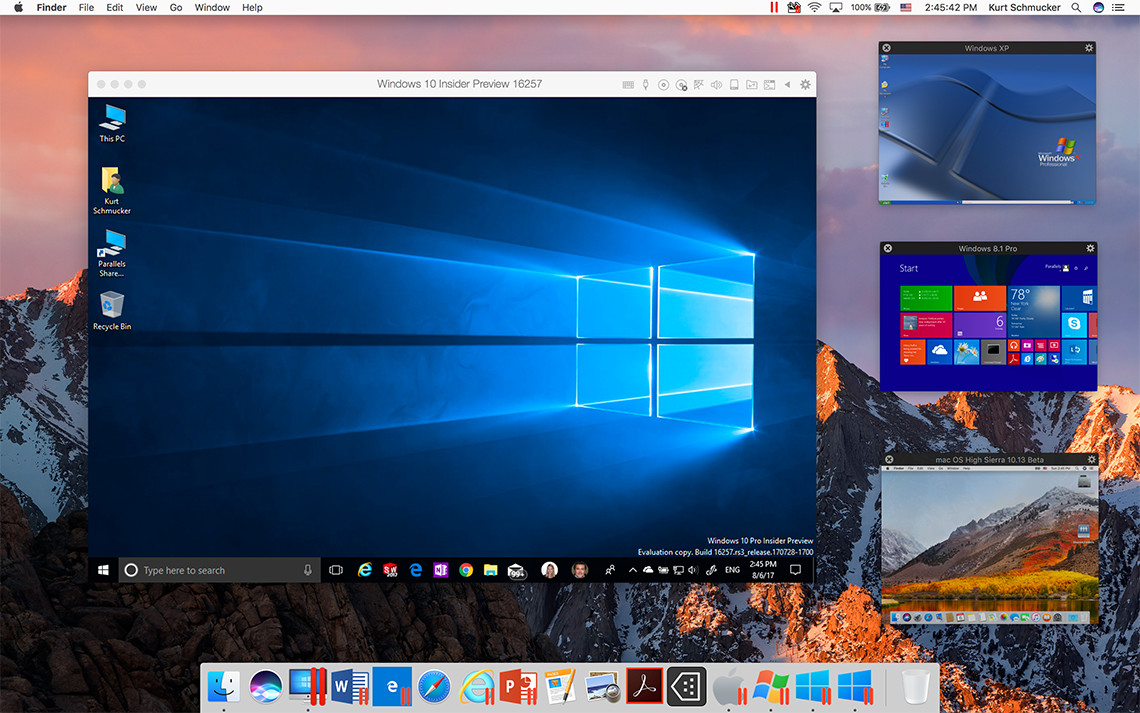Mac users should have another way to run Windows 10 on their M1-equipped devices soon. VMWare product line manager Michael Roy tweeted yesterday that, if everything goes well, the company will. Originally Answered: Can you run VMWare on Macs with Apple’s M1 chip? Currently you cannot run VMWare on Macs with Apple’s M1 chip. However, VMWare has announced that they are actively working on updating VMWare Fusion for Apple’s M1 but they cannot yet provide a timeline for when that will be.

- The Windows client is completely free, but make sure you create an account using your Mac before finishing the setup. Oh, and if you are already subscribed to Setapp on your Mac, then you’ll get Jump for free on the Mac. Windows on M1 Mac using VMWare. The final option is not yet available, but it is slated to be coming soon.
- VMware Fusion 12 VMware Fusion delivers the best way to run Windows on the Mac, and the ultimate development and testing tool for building apps to run on any platform. Ready for macOS 11.0 Big Sur, Fusion 12 supports macOS 10.15 Catalina and includes new features for developers, IT admins and everyday users.
Vmware Fusion 12
VMware Fusion 12.1.1 | 1 April 2021 | Build 17801503 |
What's in the Release Notes
The release notes cover the following topics:About VMware Fusion
VMware Fusion® 12.1.1 is the easiest, fastest, and most reliable way to run Windows and other x86 based operating systems on a Mac without rebooting.
For more information, see the broader VMware Fusion documentation.
System Requirements
Hardware
Intel Mac models that support macOS 10.15 Catalina and newer versions.Mac models that support macOS 10.15 Catalina - https://support.apple.com/en-us/HT21022.
Software
macOS 10.15 Catalina and newer versions.

What's New
This release of VMware Fusion contains security updates.
Prior Releases
Features and Known Issues from prior releases of VMware Fusion 12 are described in the release notes for each release. To view the release notes for a prior release, click the appropriate link:
Known Issues
- The virtual machine (VM) cannot access the same network as the host while macOS Big Sur host is connected to the virtual private network (VPN)
If the Big Sur host is connected to VPN, then the VM cannot access the same network as that of the host.
Workaround: Connect to the VPN in the VM instead of connecting to the VPN on the host.
With M1 Macs mere days away for early adopters, those who need to run virtual machines on their Macs may have a bumpy time ahead.
It is important to note that currently available versions of Parallels® Desktop for Mac cannot run virtual machines on Mac with Apple M1 chip. Good news: A new version of Parallels Desktop for Mac that can run on Mac with Apple M1 chip is already in active development.
Vmware M1 Mac Mini
When Apple Silicon Mac was first announced during the keynote at WWDC on June 22 of this year, Apple demoed a Parallels Desktop for Mac prototype running a Linux virtual machine flawlessly on Apple Silicon. Since WWDC, our new version of Parallels Desktop which runs on Mac with Apple M1 chip has made tremendous progress. We switched Parallels Desktop to universal binary and optimized its virtualization code; and the version that we are eager to try on these new MacBook Air, Mac mini and MacBook Pro 13″ looks very promising.
VMWare Fusion isn’t ready yet either, according to this tweet:
So excited for todays announcements from @Apple!
While we're not quite ready to announce our timeline, we're happy to say that we are committed to delivering VMware virtual machines on #AppleSilicon! pic.twitter.com/en1FNorxrM
— VMware Fusion (@VMwareFusion) November 10, 2020
Even when these and other virtualization tools are ready,1 running Windows as a VM atop a M1 Mac probably isn’t going to be. So far, all the public has seen running virtually on M1 Macs is ARM-based Linux, back at WWDC.
Microsoft has a version of Windows running on ARM chips, but as of this summer, things didn’t look great for getting it to run virtually on the new Macs:
“Microsoft only licenses Windows 10 on ARM to OEMs,” says a Microsoft spokesperson in a statement to The Verge. We asked Microsoft if it plans to change this policy to allow Windows 10 on ARM-based Macs, and the company says “we have nothing further to share at this time.”
That said, ARM Windows is getting better. Back in September, Microsoft announced that the ARM version of Windows 10 is gaining x64 emulation:
We are excited about the momentum we are seeing from app partners embracing Windows 10 on ARM, taking advantage of the power and performance benefits of Qualcomm Snapdragon processors. We heard your feedback and are making Microsoft Edge faster while using less battery, and announced that we will soon release a native Microsoft Teams client optimized for Windows 10 on ARM. We will also expand support for running x64 apps, with x64 emulation starting to roll out to the Windows Insider Program in November. Because developers asked, Visual Studio Code has also been updated and optimized for Windows 10 on ARM. For organizations, we’re committed to helping them ensure their apps work with Windows 10 and Microsoft 365 Apps on ARM64 devices with App Assure.
Before this, the ARM version of Windows could only emulate 32-bit applications. It’s a nice improvement, and maybe one day it will matter to Mac users.

- Oh, and Boot Camp is totes dead. Docker is currently busted, but should work in the future. ↩
